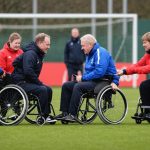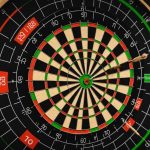Have you ever considered the power of your mind in enhancing your athletic performance? Whether you’re a seasoned athlete or a fitness enthusiast, the psychological aspect of sports can offer you a competitive edge. Mental imagery, a cognitive psychological technique, leverages the potency of your mind to impact physical strength and performance.
Mental imagery, also known as motor imagery, involves visualizing or mentally rehearsing specific movements or actions. This article explores how you can leverage mental imagery to improve the effectiveness of muscle conditioning, thereby boosting your overall sports performance.
In parallel : What are the biomechanical benefits of alternating grip styles in pull-ups?
Understanding the power of mental imagery in sports
Visualizing your training routine or game is not a new concept. Many athletes, from Olympians to amateur players, have confessed to using this strategy to enhance their performance.
So, what’s the science behind it? Mental imagery activates the same brain areas that are triggered during actual physical movement. By imagining the execution of a specific movement, athletes can improve their motor skills without even moving a muscle.
Topic to read : Can music with different BPM (beats per minute) levels affect lifting tempo and muscle engagement?
The use of mental imagery is not confined to sports. It has been applied successfully in various fields such as medicine, psychology, and rehabilitation. In sports, it can help athletes refine their techniques, develop motor skills, manage anxiety, and boost self-confidence.
The role of mental imagery in muscle conditioning
Muscle conditioning is a fundamental aspect of sports training. It involves strengthening and toning the muscles to improve their performance. In this section, we’ll delve into how adapting mental imagery can help improve muscle conditioning.
When you visualize performing an exercise, your brain sends signals to the corresponding muscles, essentially priming them for the upcoming physical demand. This cognitive rehearsal helps enhance your muscle memory, making the actual physical performance smoother and more efficient.
Moreover, when you imagine executing a movement sequence, it can help you focus on the correct form and technique. This practice can reduce the risk of injuries and improve the effectiveness of your muscle conditioning routine.
The relationship between mental strength and physical performance
Mental strength is a critical component of athletic success, equally as important as physical strength. Athletes who possess a strong mental game are better equipped to handle pressure, setbacks, and competition.
Mental imagery contributes to your mental strength by enhancing your self-belief and resilience. When you consistently visualize success, it reinforces your confidence in your abilities and increases your motivation to strive for improved performance.
Moreover, mental imagery can help manage stress and anxiety, which are common hindrances to optimal performance. By using imagery to rehearse coping strategies, you can better manage these emotions and focus on your game.
Practical ways to incorporate mental imagery into your training regimen
Now that you understand the significance and benefits of mental imagery, you may be wondering how to incorporate it into your training regimen. Here are some practical ways to do so:
-
Routine Visualization: Dedicate a specific time each day to visualize your training routine or game. Make sure to include every detail – from the setup of the equipment to the movement of each muscle.
-
Goal-oriented Imagery: Visualize not just the process, but also the outcome. Imagine achieving your training goals or standing on the victory podium.
-
Relaxation Techniques: Incorporate relaxation techniques like deep breathing into your imagery sessions. This practice can help reduce stress and enhance your focus.
-
Imagery Scripts: Consider using imagery scripts or guided imagery audio recordings. They can help guide your visualization process and ensure that you cover all necessary details.
Remember, mental imagery is a skill, and like any other skill, it improves with practice. So, be patient and persistent in your efforts.
The effects of mental imagery on athletic performance
Numerous studies have attested to the positive effects of mental imagery on athletic performance. Let’s take a look at some of these effects.
Enhanced Skill Acquisition: Mental imagery helps in better skill acquisition. Athletes who use mental imagery have been found to learn new skills faster compared to those who don’t.
Improved Focus: By envisioning the execution of a task, athletes can improve their focus and concentration, leading to better performance.
Boosted Confidence: Regular practice of mental imagery can boost athletes’ confidence and self-belief, thereby enhancing their performance.
Reduced Anxiety: Mental imagery can help manage performance anxiety by mentally rehearsing coping strategies.
While the power of mental imagery is undeniable, it’s crucial to remember that it is a supplement, not a substitute for physical training. A balanced combination of physical training, mental training, and adequate recovery is the key to optimal performance.
So, gear up to harness the power of your mind. You might be surprised at the heights you can reach simply by envisioning your success.
The science behind mental imagery and strength gains
The concept of mental imagery might seem abstract, but it’s rooted in hard science. Numerous studies have confirmed the impact of mental training on physical performance. Similar to physical training, mental imagery strengthens the neural pathways involved in the execution of a particular movement.
When you visualize a movement, the brain’s motor cortex is stimulated. This is the same region activated when you actually physically perform the action. Consequently, the regular practice of mental imagery can enhance neural connectivity, resulting in quicker and more effective muscle responses.
This concept of strength gains through mental imagery is grounded in the theory of neuromuscular facilitation. The principle is that by merely thinking about a movement, the nervous system can stimulate the muscles involved in that movement, priming them for action.
The effectiveness of mental imagery is influenced by the vividness and accuracy of the mental image. Therefore, it’s crucial to have a clear and detailed understanding of the movement or technique you’re trying to improve. This knowledge can come from prior physical practice or from observing others performing the action – a technique known as external imagery.
The use of mental imagery in strength training isn’t limited to individual movements. It can also be used to visualize the entire training session, the sequence of exercises, or even the feeling of muscle fatigue and recovery.
Enhancing sports performance through guided imagery
In addition to individual mental training, guided imagery is another effective approach to enhancing sports performance. Guided imagery involves following a script or audio recording that describes a particular movement or sequence of movements in detail.
This method can be particularly beneficial for young athletes or those new to a particular sport. It provides a clear and structured way to practice mental imagery, ensuring that all necessary details are covered.
Guided imagery can help enhance both motor imagery and internal imagery. Motor imagery refers to the mental rehearsal of physical movements, while internal imagery involves the visualization of the sensations and emotions associated with performing an action. Both are crucial for improving sports performance.
Guided imagery isn’t just about visual imagery. It can also incorporate other senses like hearing, touch, and even smell. For instance, a runner might visualize the sound of their footsteps, the feeling of the wind against their skin, and the smell of the fresh air. By engaging multiple senses, guided imagery creates a more immersive and effective mental training experience.
Conclusion: The next step in your training regimen
The power of mental imagery in enhancing strength performance and overall sports performance is well supported by scientific evidence. It isn’t a magic solution that will instantly transform you into a top athlete, but it is a valuable tool that can complement your physical training and help maximize your potential.
Remember, mental imagery is a skill that improves with practice. Start by incorporating it into your daily routine, perhaps before or after your physical training sessions. As your imagery skills improve, you’ll likely notice positive changes in your strength performance, focus, and confidence.
The use of mental imagery is an exciting frontier in sports training. It presents an opportunity to leverage your most powerful asset – your mind – to achieve your athletic goals. So whether you’re a seasoned athlete or a recreational player, why not give mental imagery a try? The benefits are worth the effort, and the potential strength gains are too promising to ignore.











